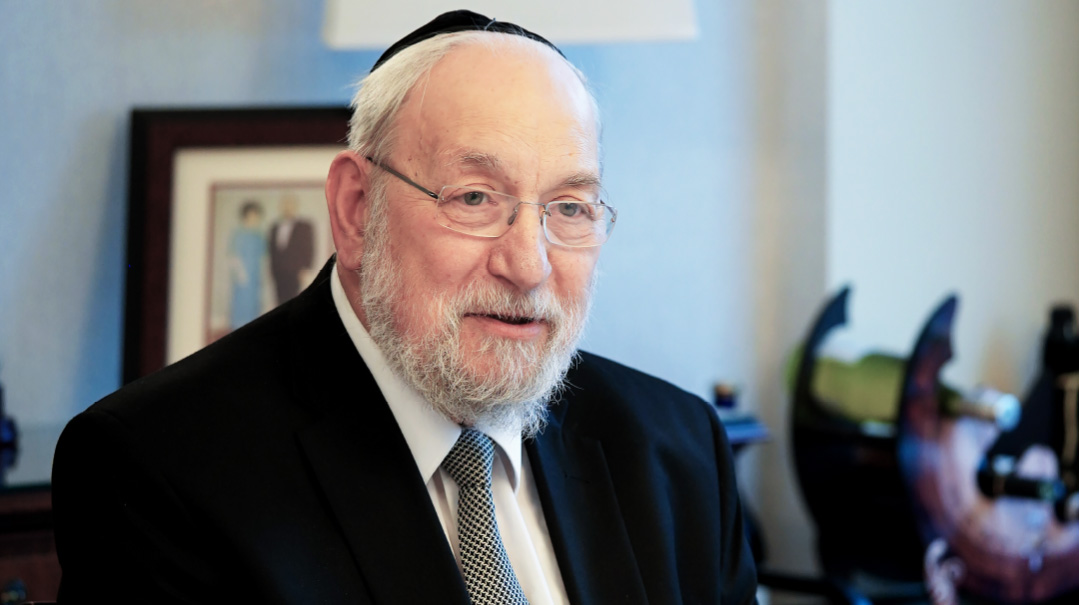Of Kings and Scribes
| May 9, 2023For Rabbi Alan Plancey, the crown on his kehillah, one of the fastest-growing Orthodox communities in the UK, tops any royal welcome

Photos: Mendel Photography
A country that celebrates its monarchy with compelling pomp and ceremony made sure King Charles III’s coronation last week was not only elaborate, but in tune with the times. “The king was surrounded by doting subjects,” says Rabbi Alan Plancey, retired pulpit rabbi, long-time chairman of the United Synagogue’s Rabbinical Council, and past mayor of Hertsmere, a borough just outside the London municipality, who was an invited guest at the king’s first garden party, a new start on the annual parties Queen Elizabeth presided over so graciously for decades.
The ornate gardens were awash with bright sunshine, and the celebrity guests were offered a “seasonal and organic” menu by climate-conscious Charles, instead of the traditional cucumber sandwiches, tea scones, and custard tarts. Rabbi Plancey knows the king from Charles’s previous interactions with the Jewish community, but in the massive crowd, he could not even get close enough to make the brachah over royalty. And with the royal family dealing with internal turmoil, every blessing for success and security would surely help.
As chairman of the United Synagogue’s Rabbinical Council, Rabbi Alan Plancey represented the UK’s Chief Rabbi at official functions through the tenures of Chief Rabbis Lord Immanuel Jacobovits and Lord Jonathan Sacks. He’s met every member of Britain’s royal family — plus the pope, the Dalai Lama, and Bill Clinton, and did so much interfaith work over the years that Lady Amelie Jacobovits a”h once called up to reprove him: “Alan, recently you’ve been going to church more than you’re going to shul!”
Closer to home, he was the rabbi of the shul in the London suburb of Borehamwood almost since that community’s inception, presiding over its growth from less than a hundred families to 1,200 families when he retired, and now one of the fastest-growing Orthodox communities in the UK. After retiring from this busy post in 2007, he served a smaller community for two years, then moved into local politics, becoming a councillor for the Conservative party and winning election as mayor of Hertsmere for a two-year term. He now has the title of honorary alderman.
We catch up with Rabbi Plancey in the family’s compact but comfortable and welcoming home on a quiet street in Borehamwood, where they have lived for 40 years. A kollel that Dayan Chanoch Ehrentreu a”h opened locally in 2019 means that there are new yeshivish families on the block, but Rabbi Plancey was definitely the first black hat in this pastoral suburban community. Still, his roots are very far from the leading cadre of rabbinic leadership and public service. He was born to Russian immigrant parents in Scotland, and intended to become a mathematician. How did he make the 180-degree turn to spend his life learning and teaching Torah instead?
Oops! We could not locate your form.







